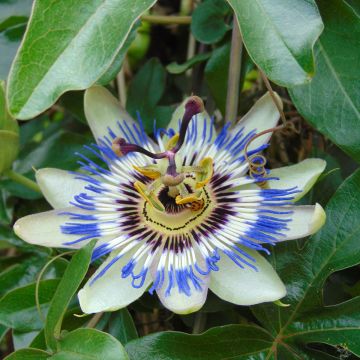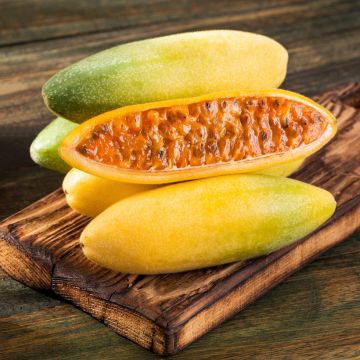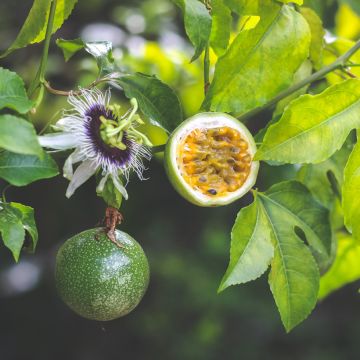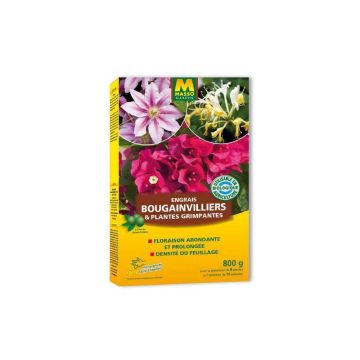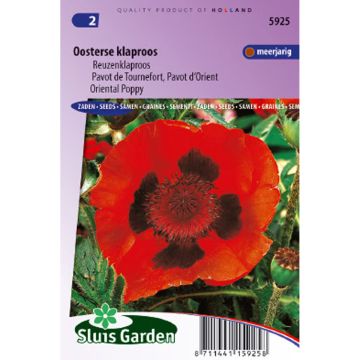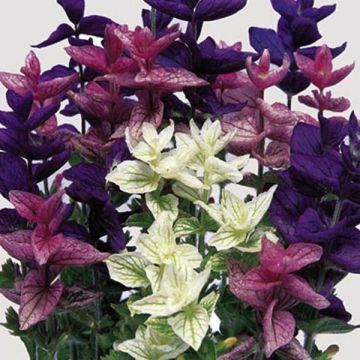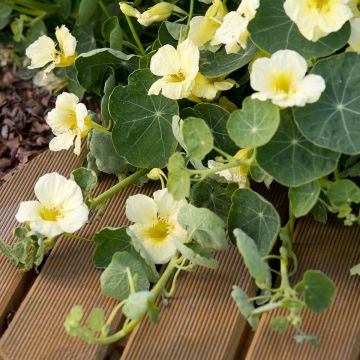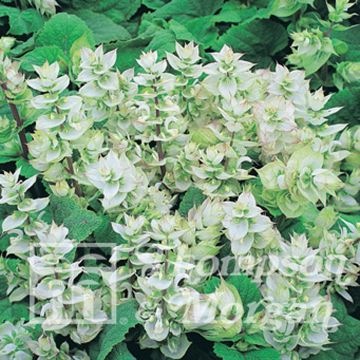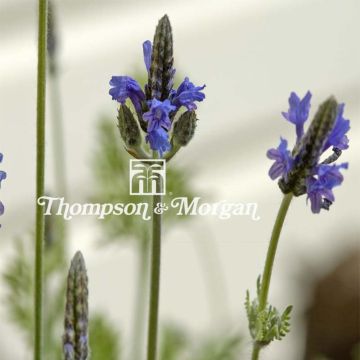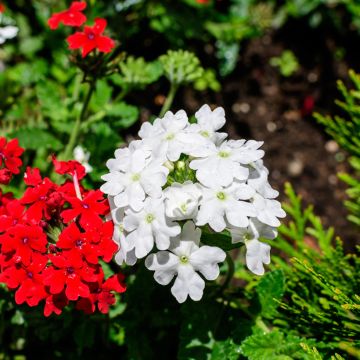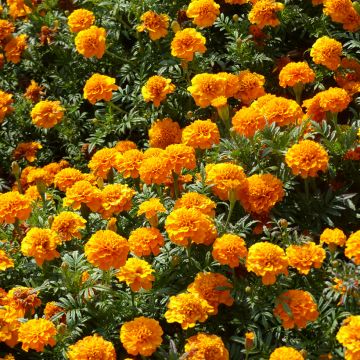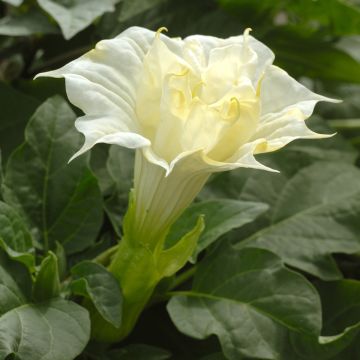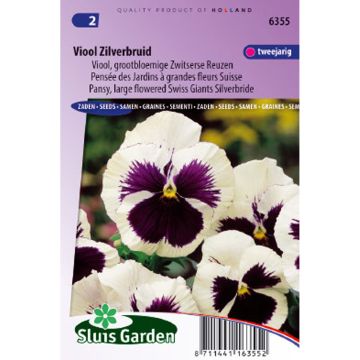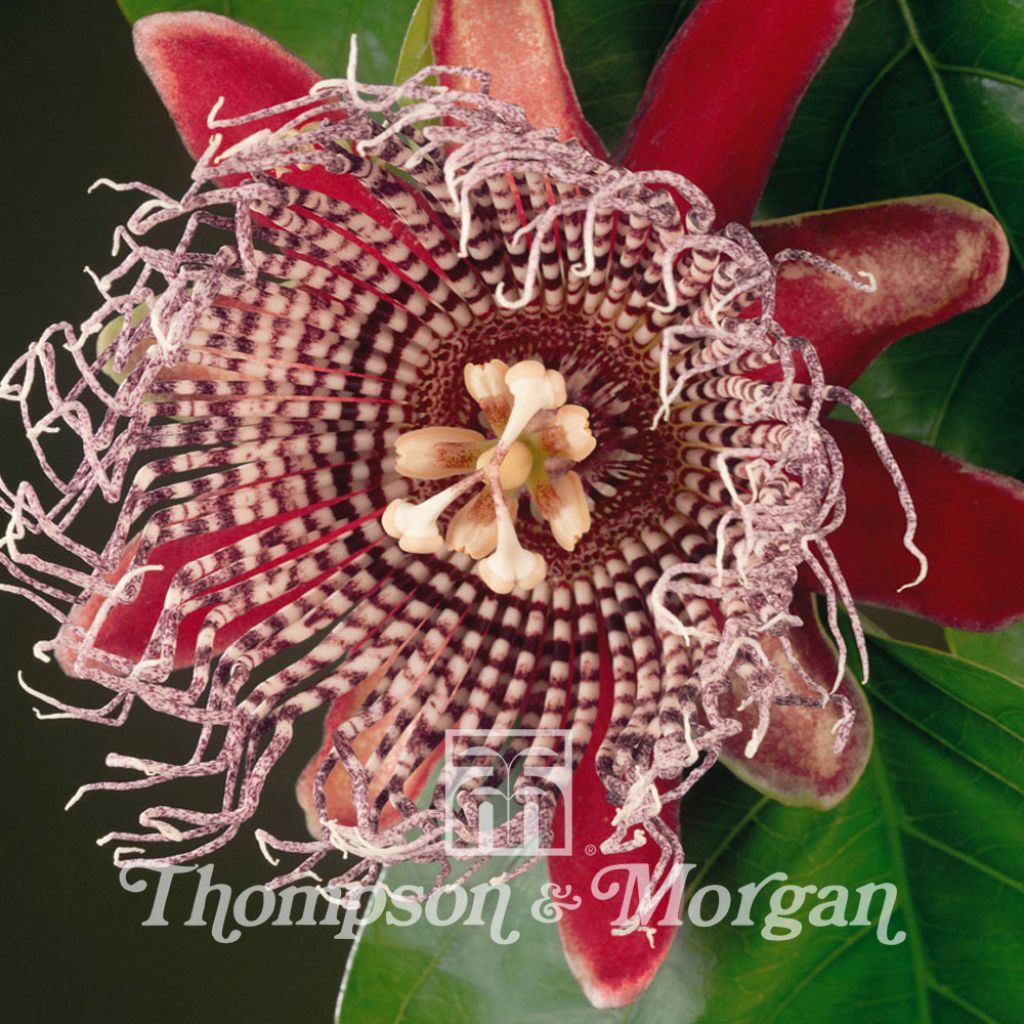

Passiflora Alata
Passiflora alata seeds
Passiflora alata
Winged-stem Passion Flower, Fragrant Granadilla, Winged Passionflower
Why not try an alternative variety in stock?
View all →This plant carries a 6 months recovery warranty
More information
We guarantee the quality of our plants for a full growing cycle, and will replace at our expense any plant that fails to recover under normal climatic and planting conditions.
Seed-only orders are dispatched by sealed envelope. The delivery charge for seed-only orders is €3.90.
Does this plant fit my garden?
Set up your Plantfit profile →
Description
The Passiflora alata, also known as winged-stemmed passionflower or wild passionfruit, is a vigorous vine with rapid growth, with a very exotic appearance. It produces abundantly large bright red flowers with a delightful fragrance, revealing a crown of white and purple filaments. The ephemeral flowers continuously renew themselves on the plant, giving way to ripe yellow fruits that are edible. Their flavor is both sweet and tangy. This botanical variety, which is not very hardy, will be cultivated in a large pot, in fertile and moist soil, and stored away in winter.
Originally from the Amazon rainforests, this red passionflower belongs to the large family of passifloraceae, which includes 400 species and numerous spontaneous or horticultural hybrids. This voluble plant clings to its support using tendrils, reaching heights of over 4m (13ft). It is characterized by its quadrangular stems adorned with finely cut oval leaves, 6 to 10 cm (2 to 4in) long, medium green, usually evergreen. Its flowering period extends from spring to autumn, with large flowers measuring 7 to 10 cm (3 to 4in) in diameter that constantly renew themselves on the plant. Its fragrant flowers are formed of bright red petals, with a striped white and mauve crown. The stamen center is yellow. Once pollinated, they give way to edible oval fruits, yellow when ripe, measuring 8 to 15 cm (3 to 6in) long, weighing between 9 and 300 grams. The pulp is pale orange, slightly acidic, and highly aromatic.
This frost-sensitive Passion Flower thrives in rich, moist, well-drained soil in a sunny location. Pruning at the end of flowering consists of reducing the branches to maintain a beautiful habit. It thrives in all southern regions and along the Loire River. With its height of 4 to 5m (13 to 16ft), Passiflora alata is used to adorn walls, fences, grilles, porches, and trellises. It is also highly appreciated in conservatories where it will spend the cold winters.
Report an error about the product description
Flowering
Foliage
Plant habit
Botanical data
Passiflora
alata
Passifloraceae
Winged-stem Passion Flower, Fragrant Granadilla, Winged Passionflower
South America
Other Graines de Passiflore
Planting and care
Sowing:
Soak the seeds in warm (not scalding) water for 24 hours before sowing.
Sow in trays, pots, etc. in a special seed compost. Bury the seeds at a depth of 6mm (0in). Enclose everything in a propagator or a warm place to maintain an optimal temperature of 20 to 25°C (68 to 77°F). Germination can sometimes be slow. If this is the case, enclose the container in a transparent plastic bag and place it at a temperature of 21°C (69.8°F) for 3 months. Keep the compost moist but not waterlogged. If germination does not occur, place the seedlings in the refrigerator (not the freezer) for 3-5 months. At the end of this period, bring everything back to 21°C (69.8°F). Germination should occur after about 3 months.
Transplant the plants large enough to handle into 8 cm (3in) pots. Then place them in 25-30cm (10-12in) diameter pots.
Cultivation:
Passiflora alata is a sun-loving plant that should be sheltered from cold, drying winds. Plant it in ordinary, well-drained soil. It is frost-sensitive and should not be planted in the ground, except in the south and coastal areas of France, in a protected location with good winter mulching. Place it on a support to support the weight of vegetation. Train its branches well on the support as the growth is exuberant. Pruning before winter is recommended to maintain a reasonable size. Do not hesitate to cut back the main stems to facilitate growth. Remove dead or misplaced branches and prune excess branches to aerate the plant. Be aware of scale insects and whiteflies, as well as the cucumber mosaic virus. Treat preventively.
Sowing period
Intended location
This item has not been reviewed yet - be the first to leave a review about it.
Flower seeds
Haven't found what you were looking for?
Hardiness is the lowest winter temperature a plant can endure without suffering serious damage or even dying. However, hardiness is affected by location (a sheltered area, such as a patio), protection (winter cover) and soil type (hardiness is improved by well-drained soil).

Photo Sharing Terms & Conditions
In order to encourage gardeners to interact and share their experiences, Promesse de fleurs offers various media enabling content to be uploaded onto its Site - in particular via the ‘Photo sharing’ module.
The User agrees to refrain from:
- Posting any content that is illegal, prejudicial, insulting, racist, inciteful to hatred, revisionist, contrary to public decency, that infringes on privacy or on the privacy rights of third parties, in particular the publicity rights of persons and goods, intellectual property rights, or the right to privacy.
- Submitting content on behalf of a third party;
- Impersonate the identity of a third party and/or publish any personal information about a third party;
In general, the User undertakes to refrain from any unethical behaviour.
All Content (in particular text, comments, files, images, photos, videos, creative works, etc.), which may be subject to property or intellectual property rights, image or other private rights, shall remain the property of the User, subject to the limited rights granted by the terms of the licence granted by Promesse de fleurs as stated below. Users are at liberty to publish or not to publish such Content on the Site, notably via the ‘Photo Sharing’ facility, and accept that this Content shall be made public and freely accessible, notably on the Internet.
Users further acknowledge, undertake to have ,and guarantee that they hold all necessary rights and permissions to publish such material on the Site, in particular with regard to the legislation in force pertaining to any privacy, property, intellectual property, image, or contractual rights, or rights of any other nature. By publishing such Content on the Site, Users acknowledge accepting full liability as publishers of the Content within the meaning of the law, and grant Promesse de fleurs, free of charge, an inclusive, worldwide licence for the said Content for the entire duration of its publication, including all reproduction, representation, up/downloading, displaying, performing, transmission, and storage rights.
Users also grant permission for their name to be linked to the Content and accept that this link may not always be made available.
By engaging in posting material, Users consent to their Content becoming automatically accessible on the Internet, in particular on other sites and/or blogs and/or web pages of the Promesse de fleurs site, including in particular social pages and the Promesse de fleurs catalogue.
Users may secure the removal of entrusted content free of charge by issuing a simple request via our contact form.
The flowering period indicated on our website applies to countries and regions located in USDA zone 8 (France, the United Kingdom, Ireland, the Netherlands, etc.)
It will vary according to where you live:
- In zones 9 to 10 (Italy, Spain, Greece, etc.), flowering will occur about 2 to 4 weeks earlier.
- In zones 6 to 7 (Germany, Poland, Slovenia, and lower mountainous regions), flowering will be delayed by 2 to 3 weeks.
- In zone 5 (Central Europe, Scandinavia), blooming will be delayed by 3 to 5 weeks.
In temperate climates, pruning of spring-flowering shrubs (forsythia, spireas, etc.) should be done just after flowering.
Pruning of summer-flowering shrubs (Indian Lilac, Perovskia, etc.) can be done in winter or spring.
In cold regions as well as with frost-sensitive plants, avoid pruning too early when severe frosts may still occur.
The planting period indicated on our website applies to countries and regions located in USDA zone 8 (France, United Kingdom, Ireland, Netherlands).
It will vary according to where you live:
- In Mediterranean zones (Marseille, Madrid, Milan, etc.), autumn and winter are the best planting periods.
- In continental zones (Strasbourg, Munich, Vienna, etc.), delay planting by 2 to 3 weeks in spring and bring it forward by 2 to 4 weeks in autumn.
- In mountainous regions (the Alps, Pyrenees, Carpathians, etc.), it is best to plant in late spring (May-June) or late summer (August-September).
The harvesting period indicated on our website applies to countries and regions in USDA zone 8 (France, England, Ireland, the Netherlands).
In colder areas (Scandinavia, Poland, Austria...) fruit and vegetable harvests are likely to be delayed by 3-4 weeks.
In warmer areas (Italy, Spain, Greece, etc.), harvesting will probably take place earlier, depending on weather conditions.
The sowing periods indicated on our website apply to countries and regions within USDA Zone 8 (France, UK, Ireland, Netherlands).
In colder areas (Scandinavia, Poland, Austria...), delay any outdoor sowing by 3-4 weeks, or sow under glass.
In warmer climes (Italy, Spain, Greece, etc.), bring outdoor sowing forward by a few weeks.

































